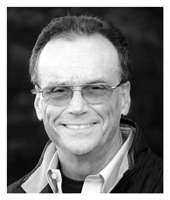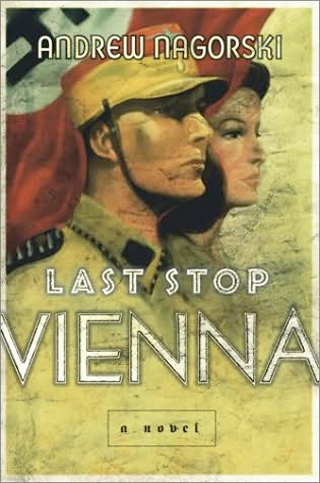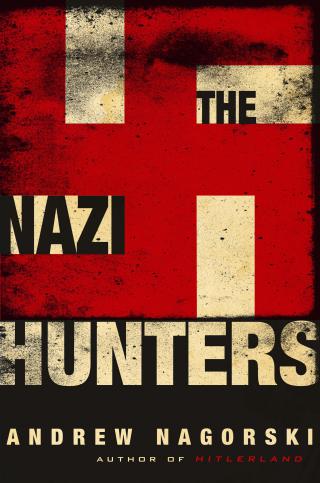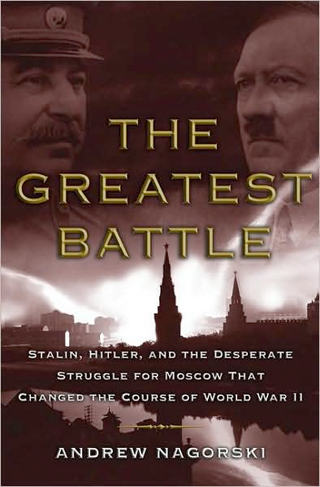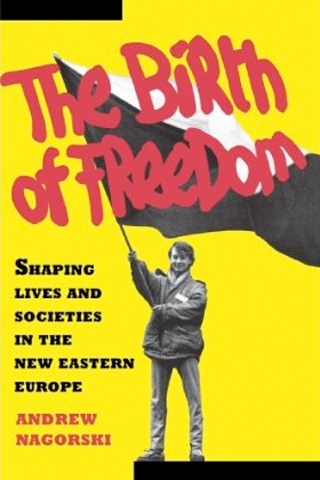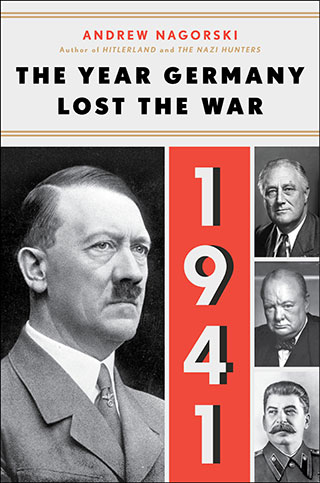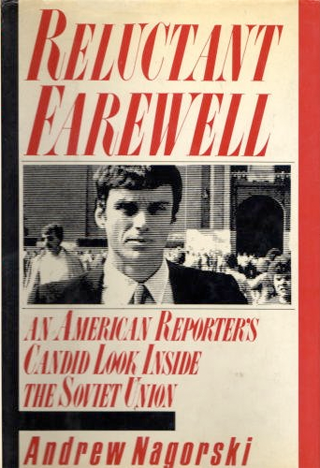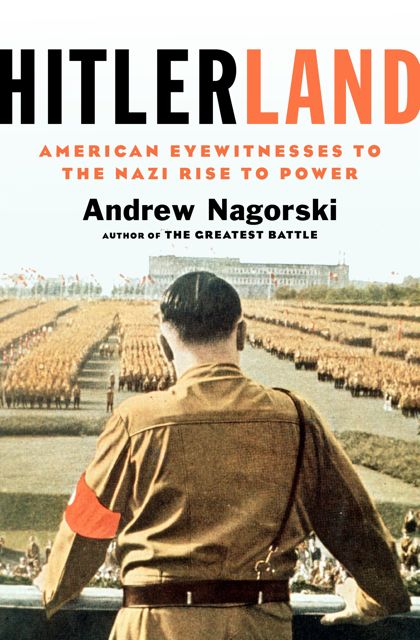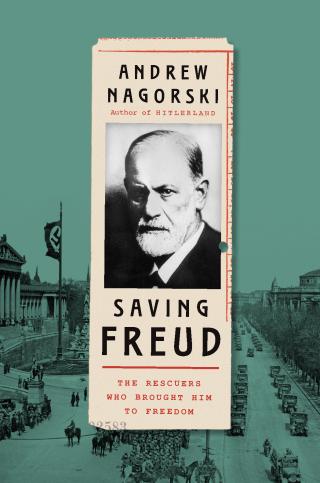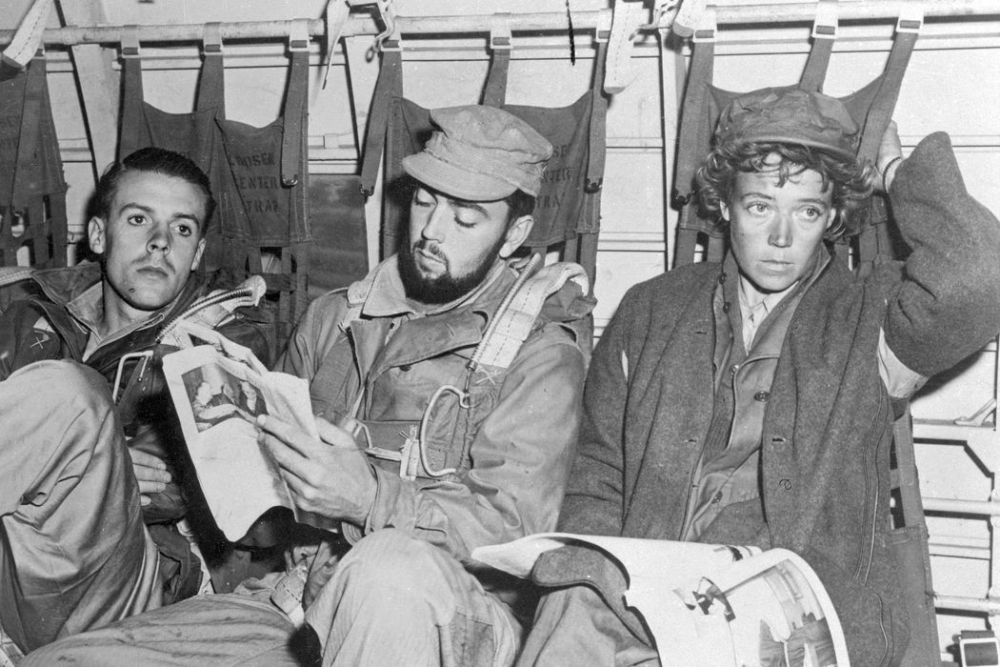
by Andrew Nagorski
During the liberation of Dachau on April 29, 1945, two correspondents accompanying an advance U.S. Army reconnaissance team were among the first to make it through the camp’s gate. Once they responded to a cacophony of voices asking whether they were Americans, a horde of jubilant, starving prisoners ran, limped or crawled out of the barracks to embrace them. The two journalists were Peter Furst, a veteran combat correspondent for Stars and Stripes, and a reporter in a bulky German army jacket and a fur-lined hat with ear flaps. When a Polish prisoner, a Catholic priest, wrapped his arms around and planted kisses on the second correspondent, he suddenly let go, exclaiming: “My God, my God, it’s a woman!”
The woman was Marguerite “Maggie” Higgins, a 24-year-old cub reporter for the New York Herald Tribune who had only recently joined the ranks of war correspondents. She was determined to prove that she belonged in this mostly male club and could excel there—despite the skepticism inspired by her looks. The AP’s Daniel De Luce, who had won the previous year’s Pulitzer Prize for his reporting from the Balkans, recalled his first impression of the new arrival: “Young, blonde, and beautiful.”
While Higgins’s ensuing string of flings and more serious love affairs sent the gossip mill into overdrive, she collected scoops and front-page stories with even more startling speed, leaving no doubt about her priorities. “She courted fame more ardently than she ever did men,” Jennet Conant writes in her mesmerizing, meticulously researched biography, “Fierce Ambition.” If anything, the title is an understatement: As Ms. Conant demonstrates, Higgins possessed a professional drive that few of her colleagues could match, one that put her on a path to covering some of the biggest stories of her era.
Her father, a U.S. Army Air Service pilot, met her French mother when they both ducked into the Paris metro during a World War I air raid. Maggie was born in 1920 in Hong Kong, where her father worked for the Pacific Mail Steamship Co. Her first words were in Cantonese, and she initially spoke French better than English. The family settled in Oakland, Calif., where the precocious Maggie skipped two grades and eventually won a scholarship to the University of California at Berkeley. There she became known as a “party girl” but also discovered her passion for journalism. Her first piece in the Daily Californian, the college paper, was an interview with W. Somerset Maugham.
Relentlessly pursuing bylines, Higgins repeatedly angered colleagues by poaching on their territory—or, rumor had it, stealing ideas and notes. Anne Duhring, who overlapped with her at the Daily Californian, declared: “She was seen as a demure-faced barracuda.” Working at the Herald Tribune, she struggled with her writing but made her name as an aggressive reporter. Newsweek’s Jim O’Donnell, who teamed up with her at times in Germany, noted: “When competing for something, Maggie . . . seemed to have three elbows.” He was amused by her methods, but others—especially other women correspondents—were outraged.
Higgins never dwelt on the obstacles she faced as a woman who aroused more suspicion—and was subjected to far more critical scrutiny of her personal life—than her male colleagues. On occasion, she felt the sting of exclusion. On one of Gen. Eisenhower’s visits to postwar Berlin, his chief of staff, Lt. Gen. Walter Bedell Smith, cut her out of a correspondents’ dinner with the boss. “I’d never trust those baby blue eyes,” Smith insisted. But Ike, along with other top generals like Lucius Clay, the military governor for the U.S. Zone in Germany, and later Douglas MacArthur, not only opened up to her but applauded her performance.
In 1947, at the ripe age of 26, Higgins attained the post of Berlin bureau chief for the Herald Tribune, putting her in charge of coverage of the tense standoff that led to the Berlin Airlift and the dawn of the Cold War. As a university student, she had participated in antiwar protests led by local Communists, but what she witnessed in postwar Europe radically changed her outlook. She was appalled by the tactics used by the Soviets as they staged phony elections to install puppet regimes. After crisscrossing Poland in late 1946, she filed a story with the headline “Poland’s Police Ape Gestapo in Election Drive.”
Her newly fierce anticommunist convictions fueled later reporting from Washington and colored her point of view as she dived into coverage of the Korean War. Indisputably courageous under fire, she endured the harshest of conditions alongside the troops, producing a cascade of acclaimed reports and winning a Pulitzer Prize in 1951.
But there were pitfalls. Her close ties to John and Robert Kennedy in the early 1960s, coupled with her anticommunism, prompted her to denounce young reporters like David Halberstam of the New York Times who were skeptical of the administration’s claims that it was winning in Vietnam. “Maggie was so blinkered by her Cold War outlook,” Ms. Conant writes, that she “only confirmed to many that she was a Kennedy shill.” To editors in New York who queried him about Higgins’s reports, Halberstam shot back, via cable: “MAGGIE COPY NOT TAKEN SERIOUSLY HERE.”
With the Herald Tribune sinking, Higgins jumped to Newsday as a syndicated columnist in 1963. Shortly before JFK was assassinated, she castigated his administration for sanctioning the coup that resulted in the murder of South Vietnam’s President Ngo Dinh Diem. Her second marriage was under strain, but she kept returning to Vietnam to report more from the field, urging the Johnson administration to escalate further despite her growing pessimism about the chances for military success.
Her persistence had tragic results: Returning from a trip to Vietnam in 1965, she fell ill, the victim of a rare tropical parasite. Higgins was only 45 when she died on Jan. 3, 1966. Ms. Conant’s book has brought her back to life.
Mr. Nagorski is a former foreign correspondent and editor for Newsweek and the author, most recently, of “Saving Freud: The Rescuers Who Brought Him to Freedom.”
